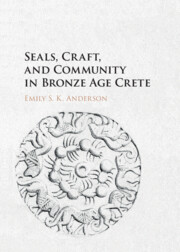Book contents
- Seals, Craft and Community in Bronze Age Crete
- Seals, Craft and Community in Bronze Age Crete
- Copyright page
- Dedication
- Contents
- Illustrations
- Book part
- Introduction
- Chapter One Rethinking Prepalatial Crete
- Chapter Two Identity and Relation through Early Cretan Glyptic
- Chapter Three Distance and Nearness
- Chapter Four In the Hands of the Craftsperson
- Chapter Five The Crafting of New Social Space
- Book part
- References
- Notes
- Index
- References
References
Published online by Cambridge University Press: 20 October 2016
- Seals, Craft and Community in Bronze Age Crete
- Seals, Craft and Community in Bronze Age Crete
- Copyright page
- Dedication
- Contents
- Illustrations
- Book part
- Introduction
- Chapter One Rethinking Prepalatial Crete
- Chapter Two Identity and Relation through Early Cretan Glyptic
- Chapter Three Distance and Nearness
- Chapter Four In the Hands of the Craftsperson
- Chapter Five The Crafting of New Social Space
- Book part
- References
- Notes
- Index
- References
- Type
- Chapter
- Information
- Seals, Craft, and Community in Bronze Age Crete , pp. 289 - 308Publisher: Cambridge University PressPrint publication year: 2016



